Tokushukai Disaster Medical Assistance Team (TMAT) organized medical relief missions to areas affected by the Touhoku earthquake, and completed its last mission on May 2nd. 5 MDs and 1 RN / NP from JMSA and JAMS' Net have volunteered with TMAT.
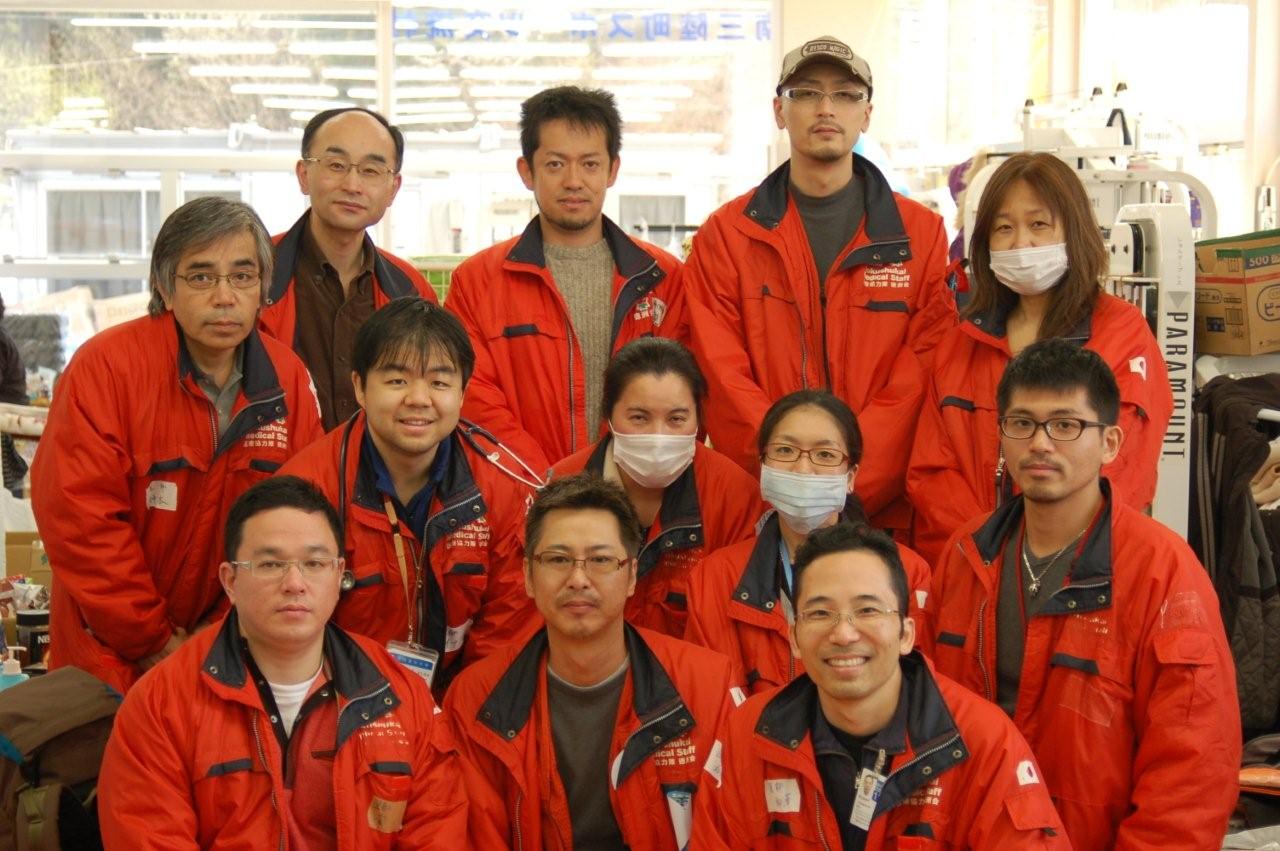
Ms. Naoko Harada, RN, PhD student
Boston College, Boston (JMSA)
Dr. Koichi Nakamoto, Surgery / Psychiatry
Consulate of Japan, Tanzania (JAMS' Net)
Dr. Akira Nishisaki, Critical Care Medicine
he Children's Hospital of Philadelphia (JMSA)
he Children's Hospital of Philadelphia (JMSA)
Dr. Kamal Ramani, General Internal Medicine
Private Practice, New York (JMSA)
Dr. Tomo Tarui, Fetal-Neonatal Neurology
Children's Hospital, Boston (JMSA)
Children's Hospital, Boston (JMSA)
Dr. Robert Yanagisawa, Endocrinology
Mount Sinai Medical Center, New York (JMSA)
Mount Sinai Medical Center, New York (JMSA)
Please click 'Read More' to see pictures of TMAT activity from late April with captions by JMSA board member Dr. Robert Yanagisawa.
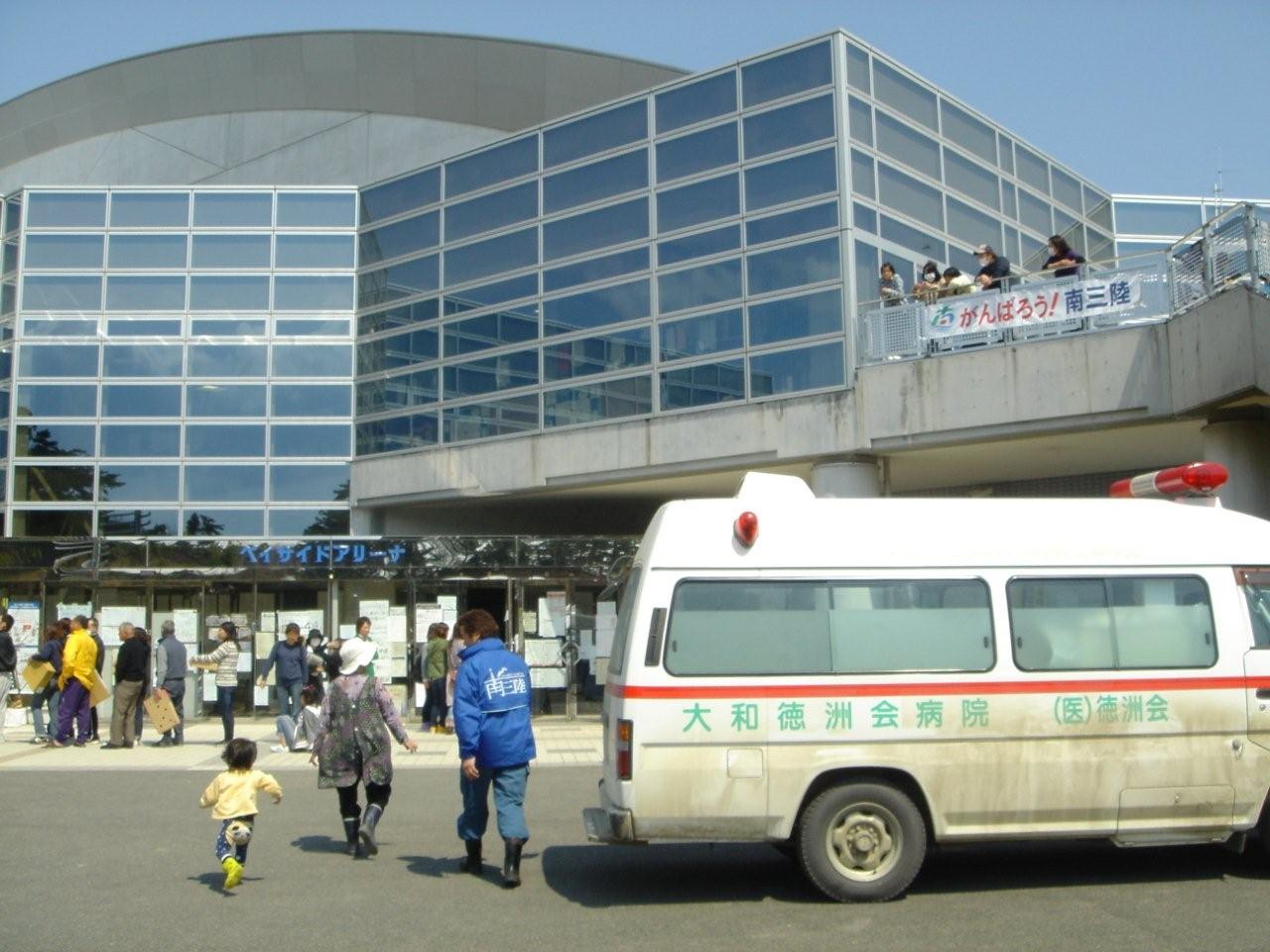
Bayside Arena in Minami Sanriku, Miyagi
The TMAT base camp was a large sports complex called Bayside Arena in Minami Sanriku, Miyagi . It housed the disaster headquarters and about 1200 refugees who lost their homes. The base camp at the arena served as the only walk-in medical clinic with nurses, physicians and pharmacists.
–
– –
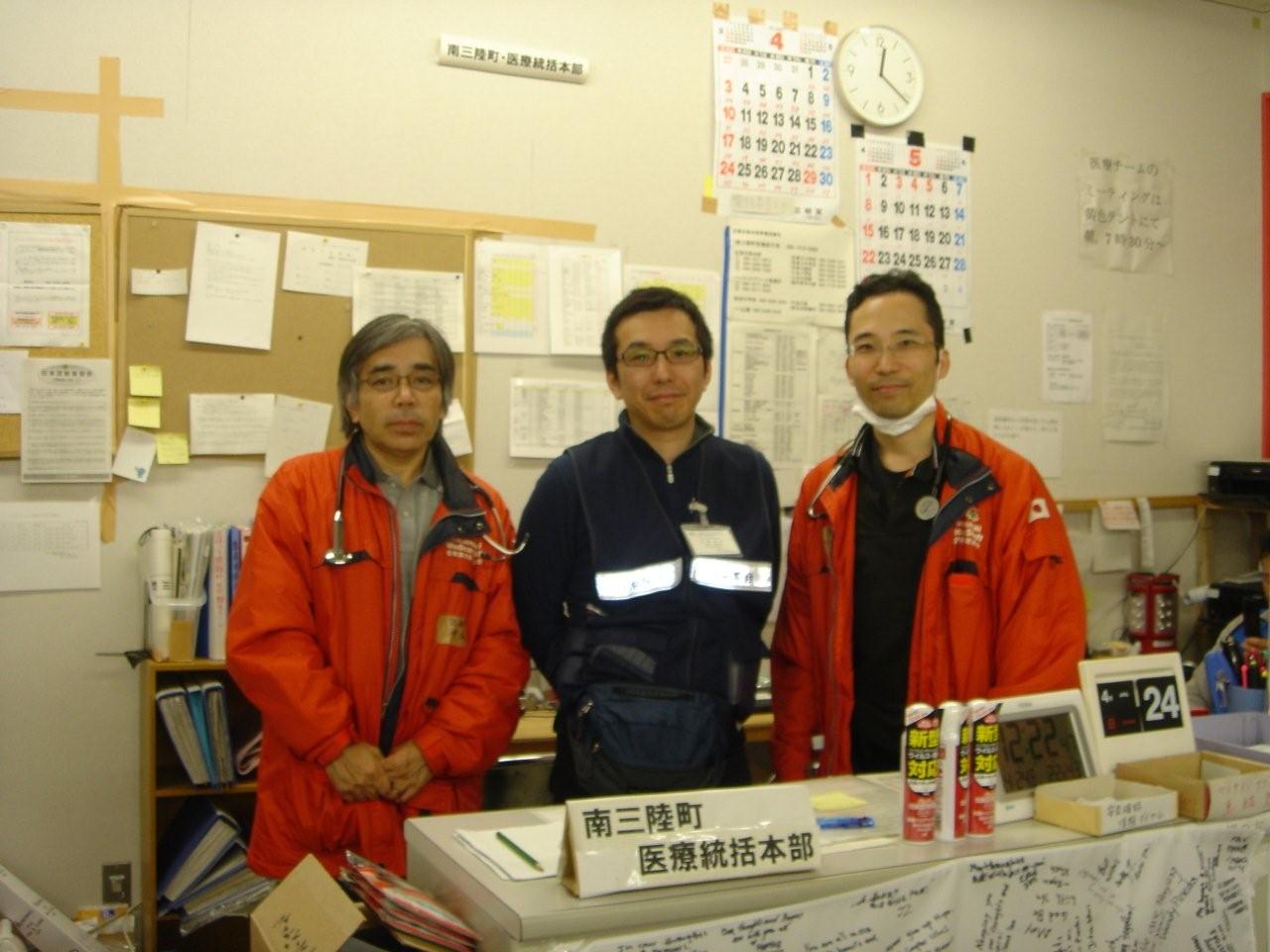
–
-Dr. Nakamoto, Dr. Uno, and Dr. Yanagisawa at Medical HQ
Medical volunteer HQ was also at Bayside Arena. Doctors from Jichi Idai were organizing 20 – 30 teams for the Minami Sanriku area.-
–
–
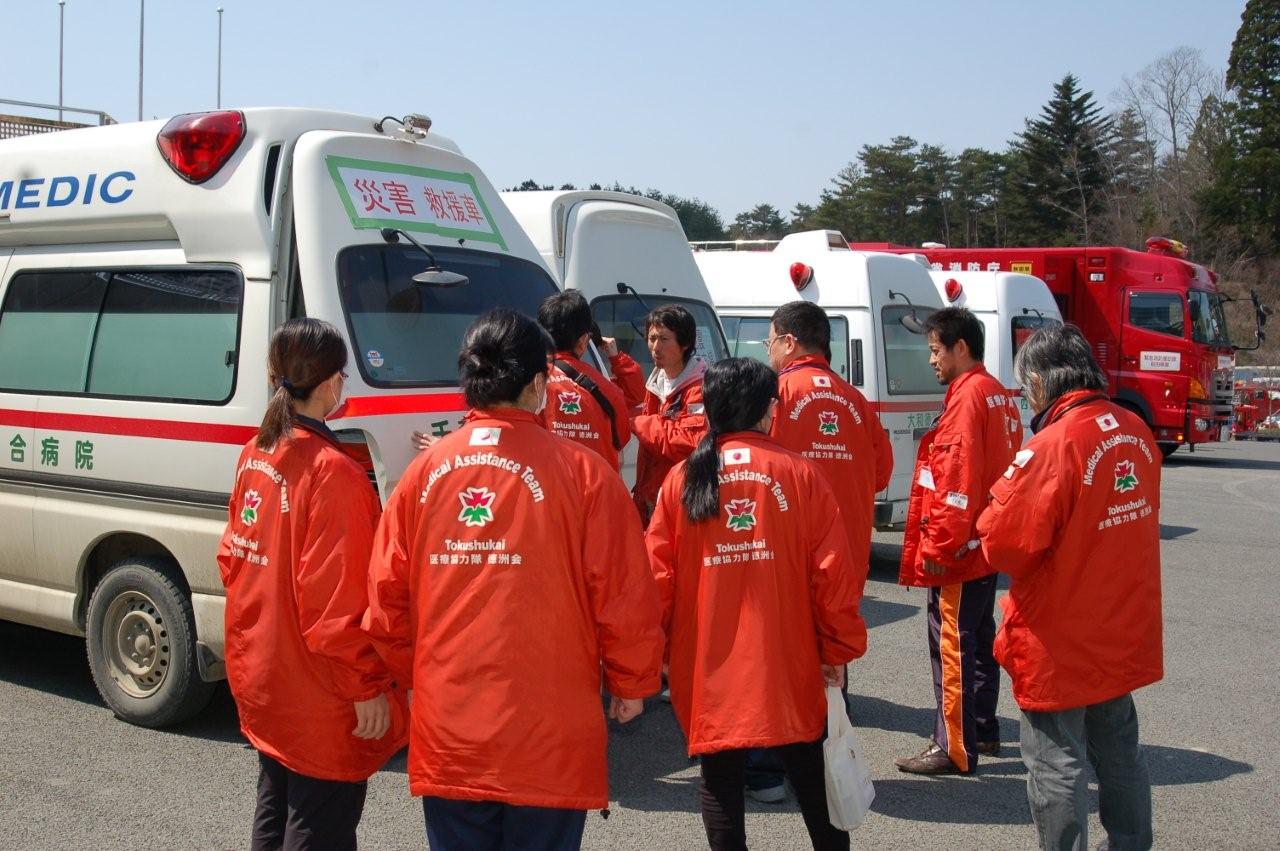
Gearing up to Go into the Field
We were subdivided into groups consisting of a logistical staff who drove the ambulances, 4-5 physicians, 2-3 nurses, and 1-2 pharmacists. We would drive out to other small refugee camps to deliver medical care as a visiting clinic service. There was no public transportation operating in the disaster area, so people had no means to come to our base camp unless they had a car. Even with a car, gasoline was difficult to obtain in the area.
—
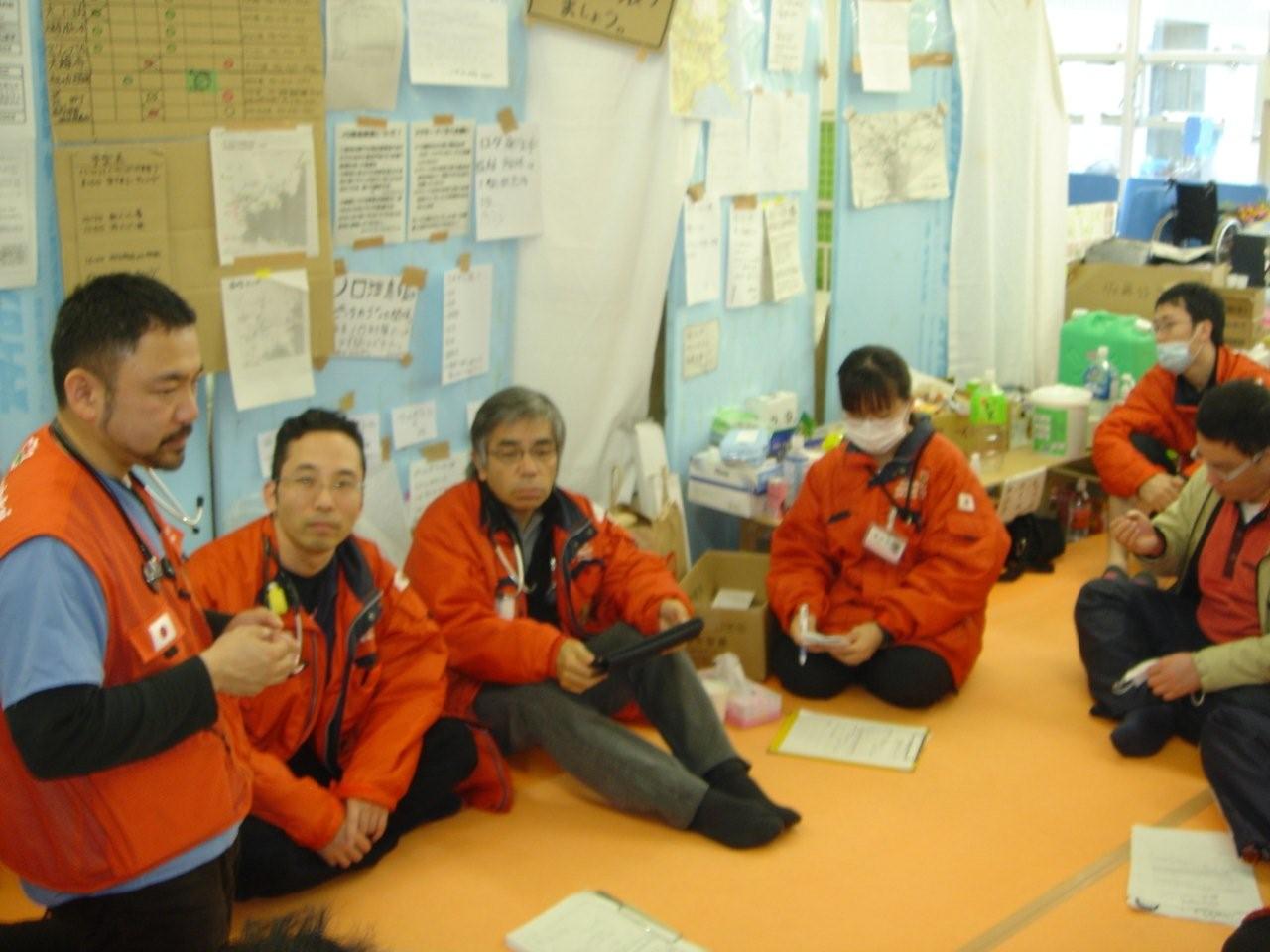
–
Dr. Tarui as the Team Leader
Each day, the team leader obtained information on the number of expected patients and notified the contact person with an estimated time of our arrival so patients were waiting for us.
–
–
–
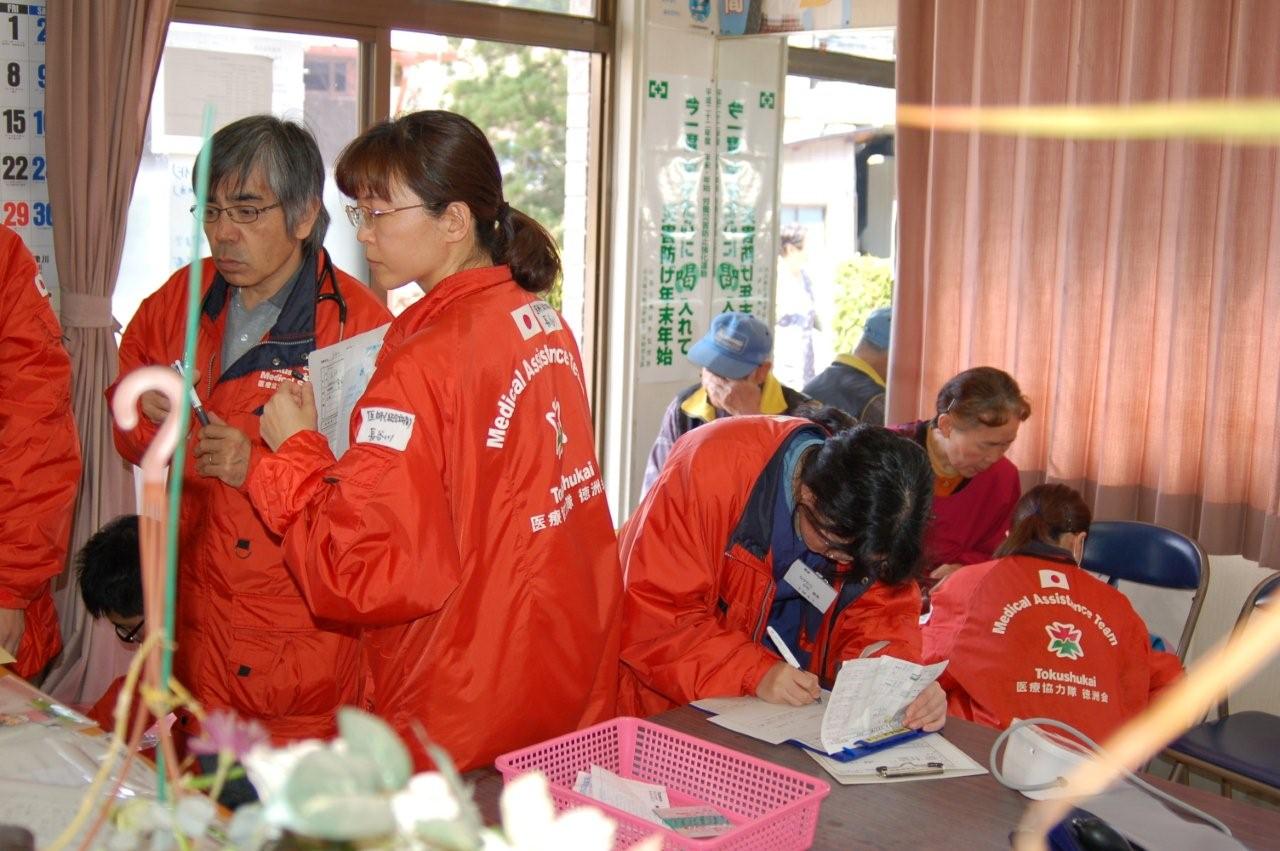 –
–
–
–
Mobile Clinic
We spent about 90 minutes at a given location and saw about 15 to 20 patients. Since it had been 45 days since the onset of disaster, most patients required maintenance care for chronic medical conditions such as hypertension, diabetes, and cardiovascular diseases.
–
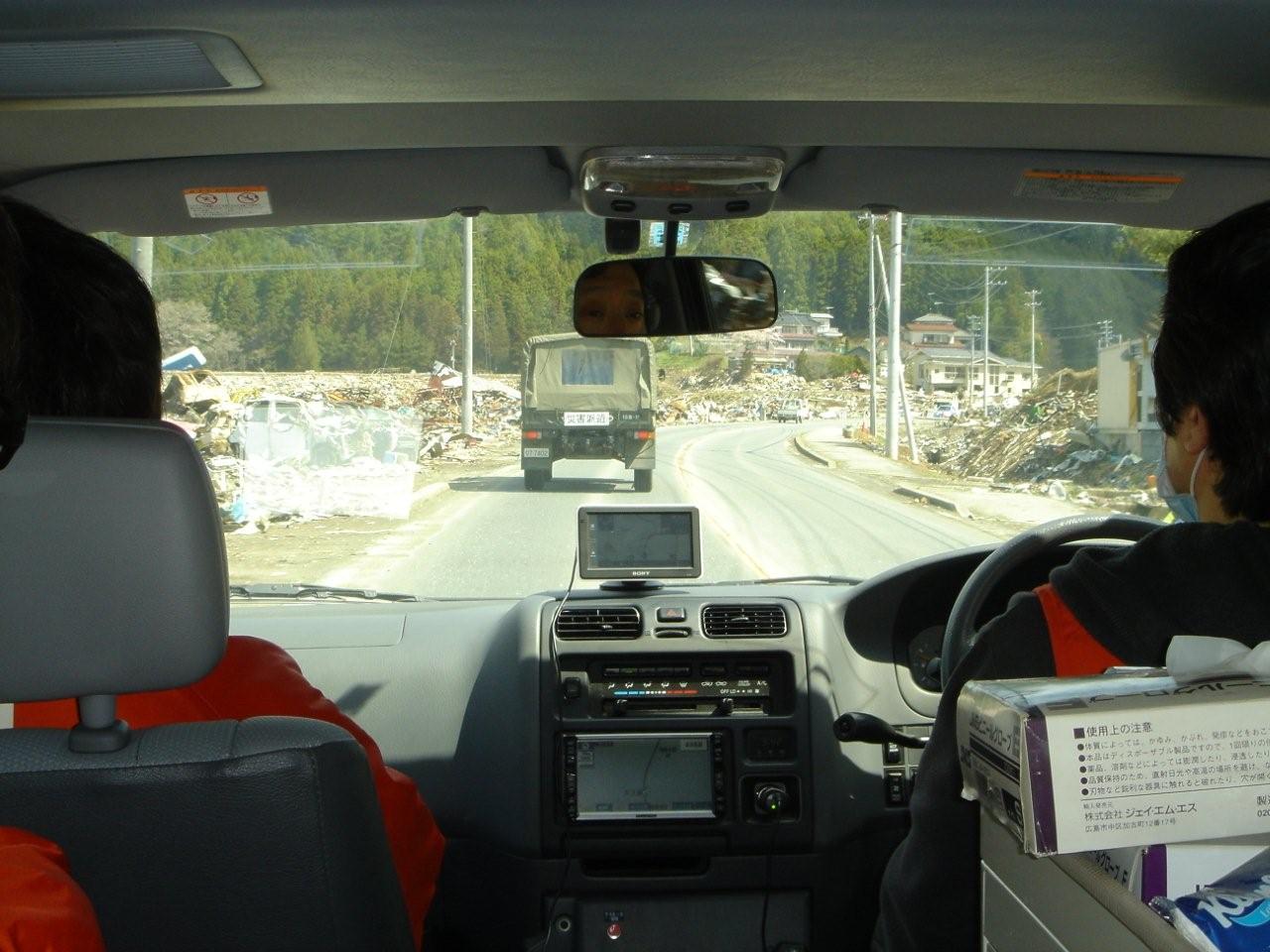 –
–
–
–
–
4WD Ambulances
We always had two 4WD ambulances to travel to and from the field. Around the disaster area, drivers had to navigate the roads with no signs or traffic lights.
–
–
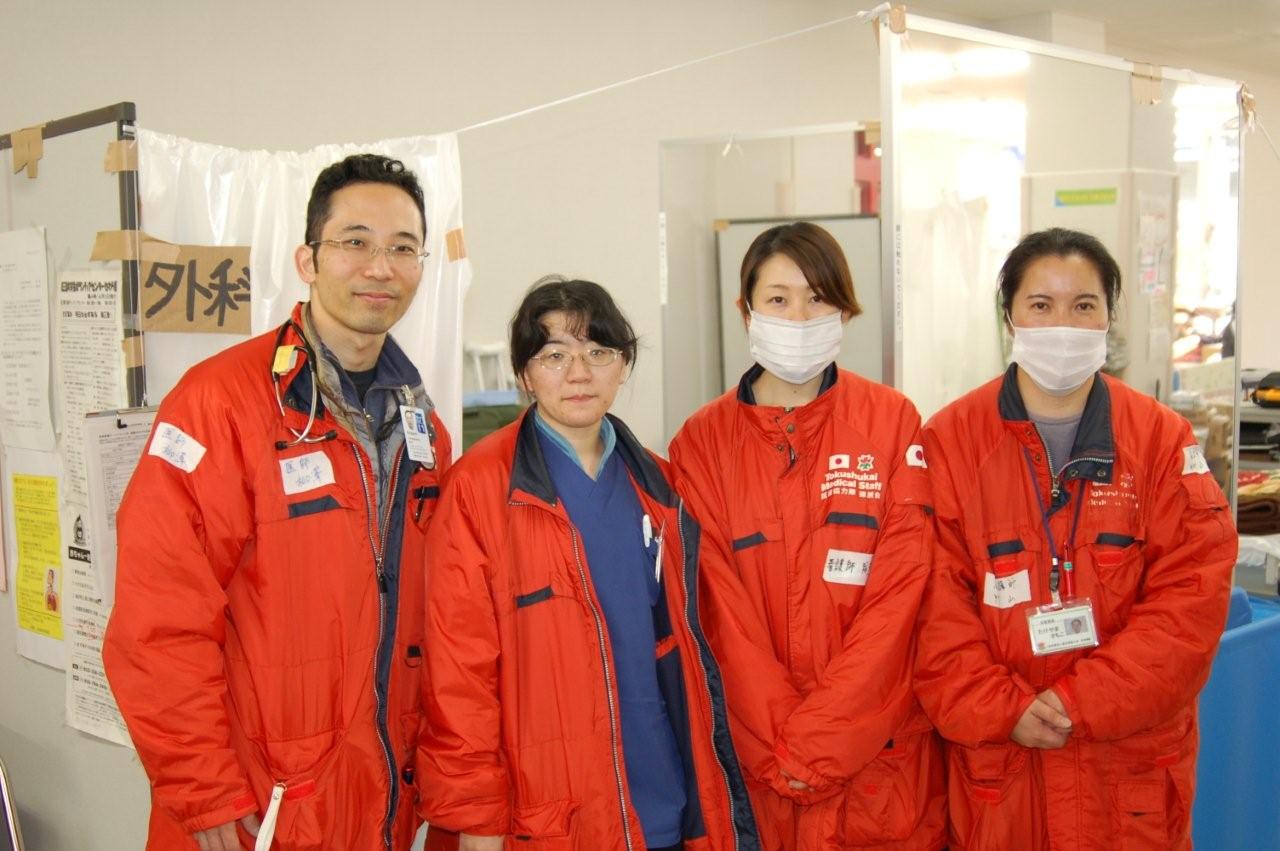
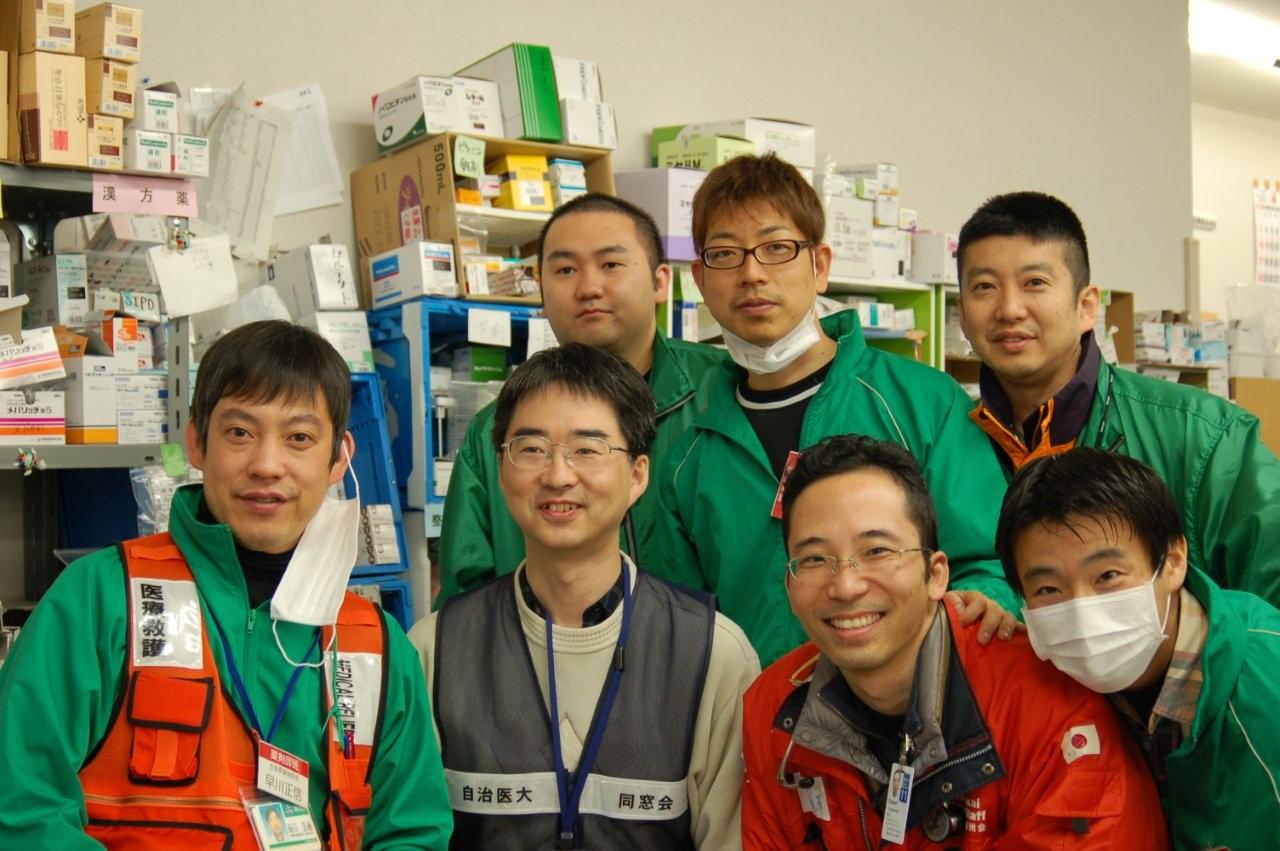
–
Left: Dr. Yanagisawa and the post call team on April 26th. Right: The headquarters leader, pharmacists and Dr. Yanagisawa.
As of May 2nd, most of the volunteer medical teams have finished their activities. The local Shizugawa Hospital resumed its operation in the temporary hospital where a team from Israel had set up their operation. In Minami Sanriku, the local hospital resumed its operation in a temporary location. Project Hope has also established a long term program to bring more voluntary medical personnel to support local hospitals in Kesenuma, Miyagi.
